HBCUs refuse to be 'paralyzed by fear' as FBI investigation into bomb threats intensifies
Following a series of unsolved bomb threats directed at historically Black colleges and universities, or HBCUs, the FBI revealed this week that at least 57 institutions, including houses of worship, received such threats between Jan. 4 and Feb. 14. In response, the agency announced Wednesday, investigators at 31 of its field offices around the country have been deployed to “aggressively investigate” the matter just three weeks after they launched their initial probe. (The FBI didn't immediately respond to an inquiry as to how that data breaks down on HBCUs versus other targets or whether the attacks on houses of worship also appeared to be motivated by racism.)
“We recognize the fear and disruption this has caused across the country, and we will continue our work to make sure people feel safe in their communities, schools and places of worship,” the statement read in part. “The FBI is investigating these cases as racially or ethnically motivated violent extremism and hate crimes."
And while the investigation ticks up, so too do the threats, particularly at HBCUs.
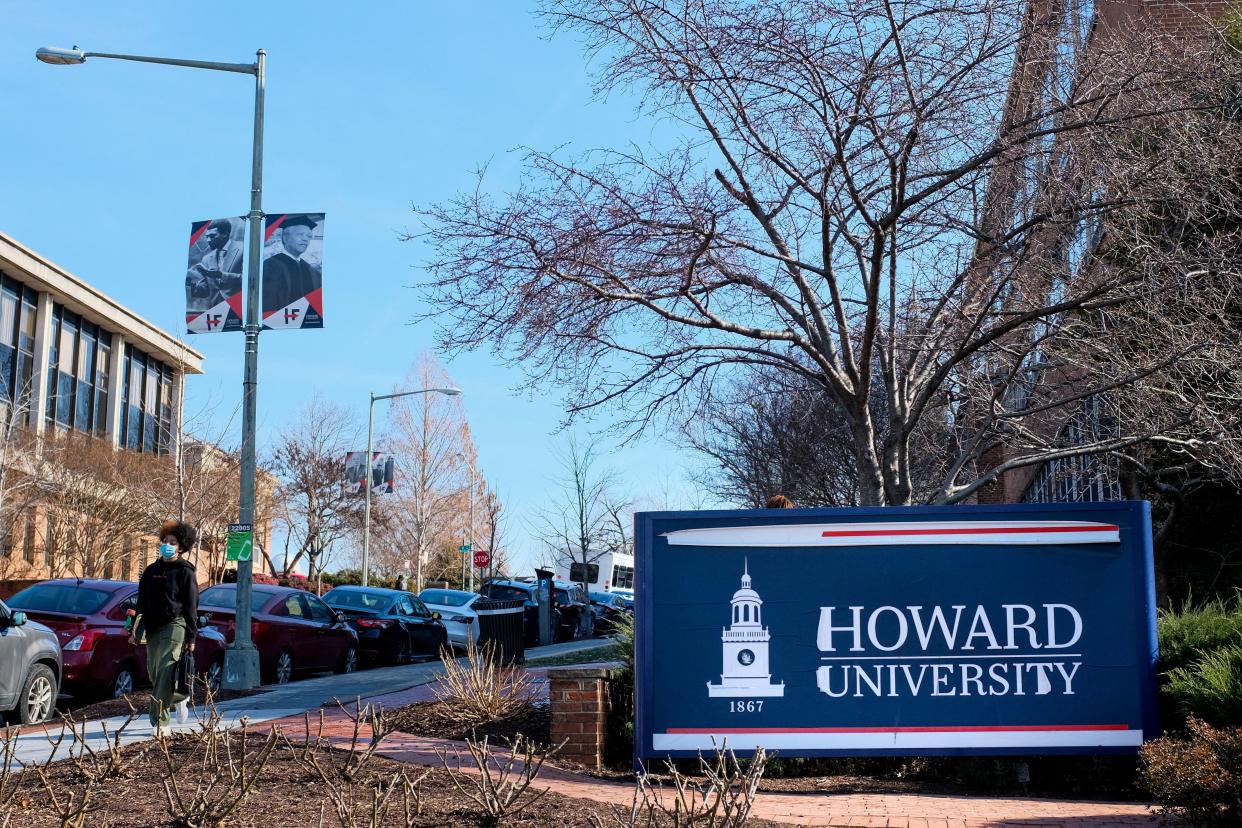
Early Friday morning, Dillard University in New Orleans, Norfolk State University in Norfolk, Va., and Elizabeth City State University in Elizabeth City, N.C., became the latest HBCUs to receive bomb threats, forcing students to shelter in place and closing down at least one of the college campuses for the day. On Wednesday, Hampton University in Hampton, Va., received a bomb threat that was found to be unsubstantiated a few hours later, the school said in a statement. Howard University, which is located in the nation’s capital, received its fourth bomb threat in as many weeks last Monday.
The FBI reported that the threats have been made by phone, email, instant messages or anonymous online posts. By Feb. 2, the FBI’s joint terrorism task forces had identified at least six “tech savvy” juveniles as persons of interest, but no arrests have been made.
There hasn’t been a week in February without a bomb threat reported at an HBCU. In all, more than two dozen nationwide have reported bomb threats since early January, leading many critics to believe the aim is to cripple students with fear.
“Violence is a tool of intimidation used to silence these institutions and their students,” Robert Greene, assistant professor of history at Claflin University in Orangeburg, S.C., told Yahoo News.
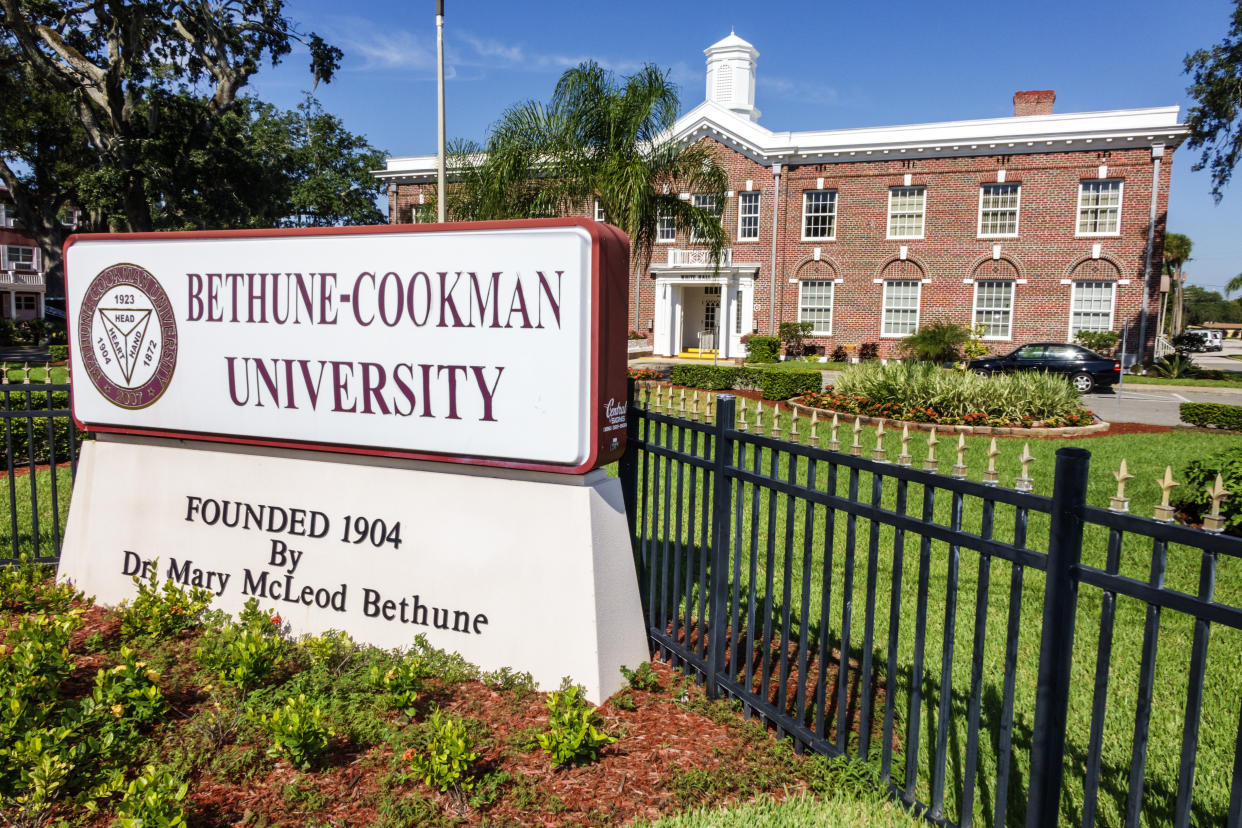
The mounting threats have roiled HBCUs nationwide, disrupting normal campus life and straining school leadership to take on additional expenses to ensure student safety. Many of these schools have limited resources, with some public HBCUs having been underfunded by state governments for decades compared with their majority-white counterparts.
HBCUs have over two centuries played a significant role in Black history and the history of American higher education. Before Black people were allowed to attend majority-white colleges and universities, they created their own. Today HBCUs generate $14.8 billion in economic impact, according to the United Negro College Fund.
“Whatever the motives are of the individuals who are making these threats … we, as a country, need to recognize that these institutions need our protection and they need our investment because of their importance to our entire nation’s educational success,” said Yasmin Cader, a 1989 graduate of Howard University and current director of the ACLU Trone Center for Justice and Equality. “These threats highlight not only [potential violence] but also highlight how HBCUs are systematically underfunded.”
“Acts of domestic terrorism have further stained the fabric that has attempted to hold this country together,” Carmen J. Walters, the president of Tougaloo College, said. (Tougaloo is an HBCU located in Jackson, Miss., that received a bomb threat earlier this month.) “When bombings occurred on our campus during the early ’60s, crosses were burned at the campus entrance in response to our work to dismantle Jim Crow, and freedom workers were pulled over for driving cars with ‘Tougaloo College’ bumper stickers, we did not falter in our mission, nor were we paralyzed by fear — and nor are we faltering today.”
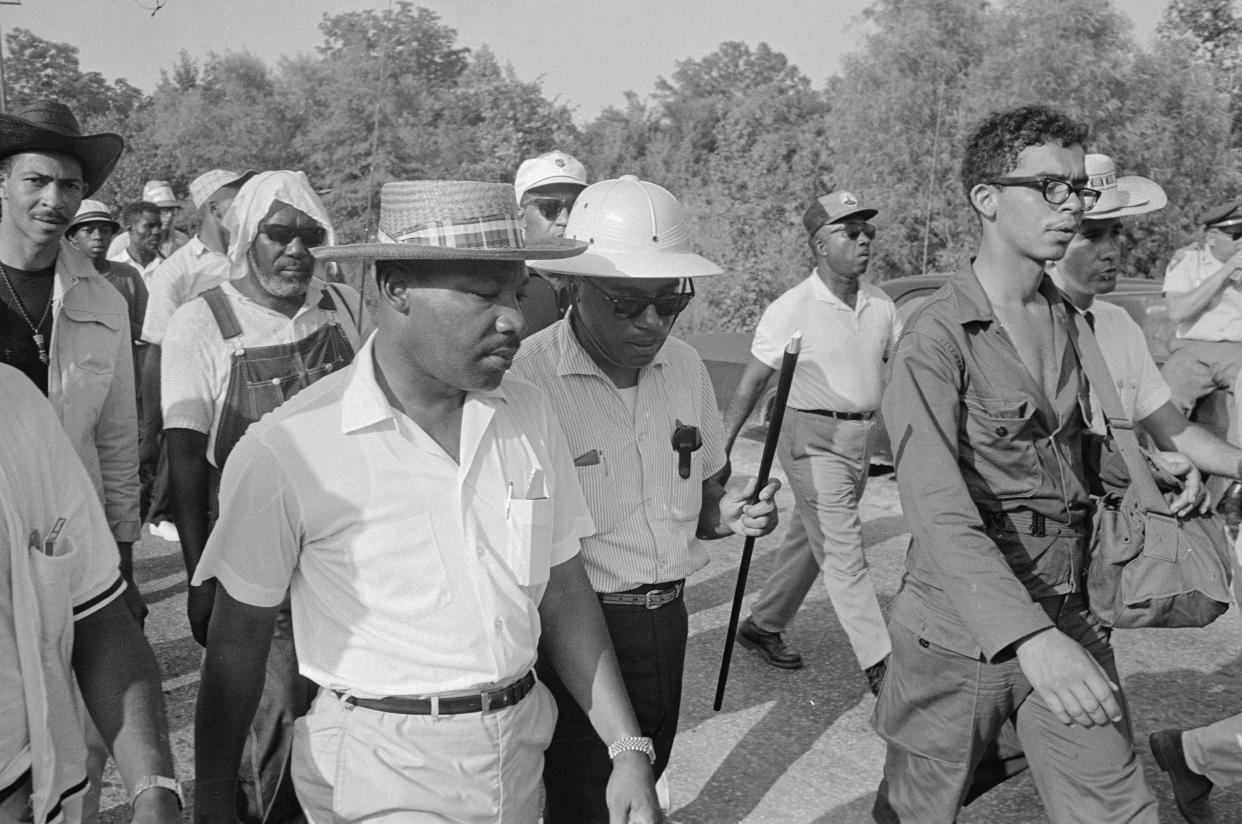
“Their mission was to deter our mission for Black excellence and Black unity in the United States of America,” Zachary Wilson, the student government vice president at Rust College in Holly Springs, Miss., told Mississippi Today. Rust College received a bomb threat on the first day of Black History Month. “We are undeterred, and they failed,” Wilson added. “They simply failed.”
The threat of violence, historically carried out by white supremacist groups, has long been associated with HBCUs since many were founded in the 1800s.
Wilberforce University, one of the nation’s oldest private HBCUs, in Greene County, Ohio, faced an arson attempt shortly after the assassination of Abraham Lincoln in April 1865. The fire destroyed several university buildings, resulting in $50,000 in damage, according to the New York Times. Howard University came under attack in 1919, when a race riot broke out across Washington, D.C., wreaking havoc across the city for four days.
By the 1920s, Black students at HBCUs began to regularly demonstrate through rallies and sit-ins for a more equitable education system, including improved class resources. In response, they were often met with violence from police officers and white supremacist groups. Two students at Jackson State in Jackson, Miss., were killed and 12 others injured in May 1970 when police opened fire on a group of students.
“These crimes are part of a long history of attacks on institutions that serve the Black community," the American Historical Association said in a statement Tuesday. “[These acts] spawned not only a hateful legacy, but also a current, ongoing threat to the physical safety and emotional well-being of all Black Americans.”
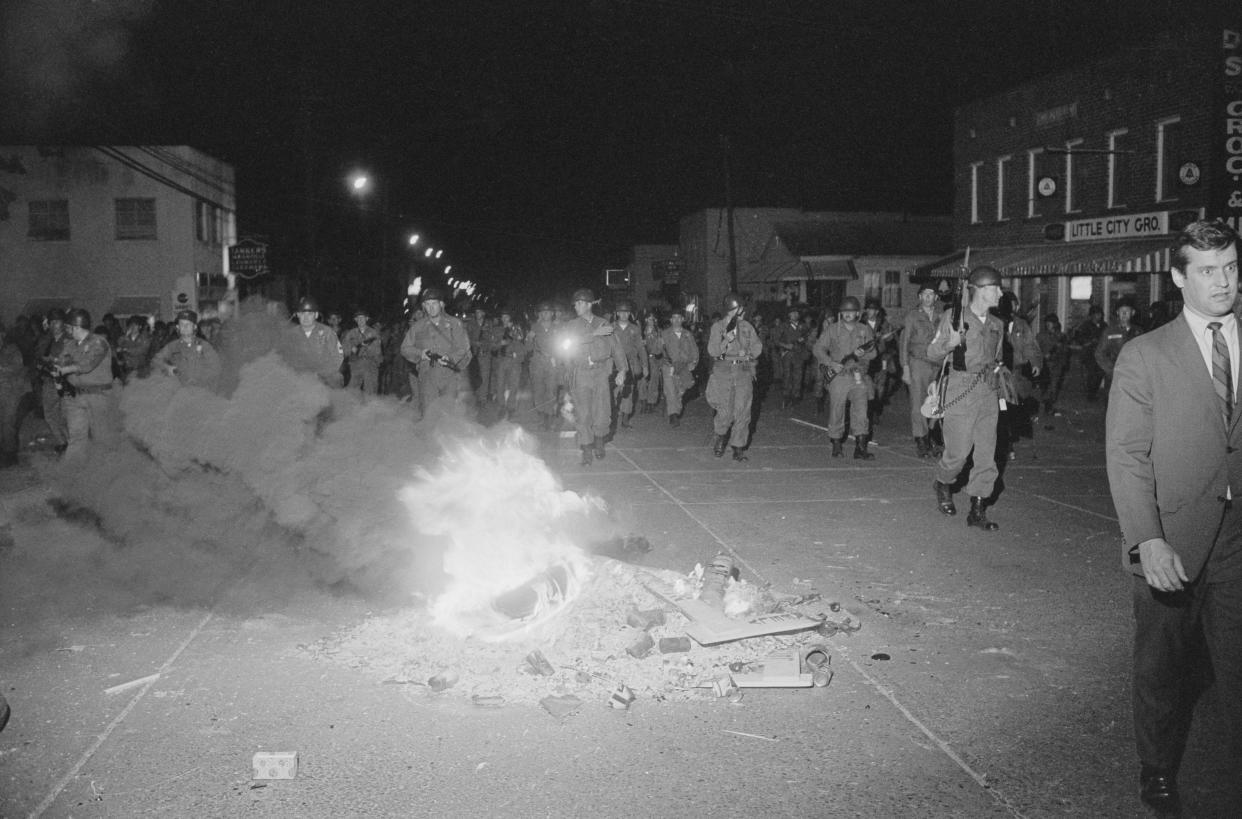
The most recent threats come on the heels of historic achievements by HBCU graduates, including Kamala Harris, the first woman, first Black person and first Asian American to become vice president of the United States. Harris graduated from Howard University in 1986.
“There are some people in society who actually are threatened by the power of HBCUs and the transformative education that they provide and how they provide access to spaces that were once shut off or once limited to minoritized communities,” Robert Palmer, an associate professor of policy studies at Howard University, told NBC News. “There definitely seems to be a correlation between the recent attention HBCUs have gotten, particularly with Kamala Harris, and the fact that HBCUs are equipping students to get access to key places and important places of power in society.”
For some, the HBCU experience, for better or worse, is historically intertwined with conflict.
“One of the greatest parts of being at an HBCU is that we are always at the center of our political history,” Cader of the ACLU said. During her time in college, Cader recalls classmates rallying for U.S. divestment from South Africa during apartheid and protesting against the nomination of Robert Bork to the Supreme Court, adding that those experiences “shaped my education.”
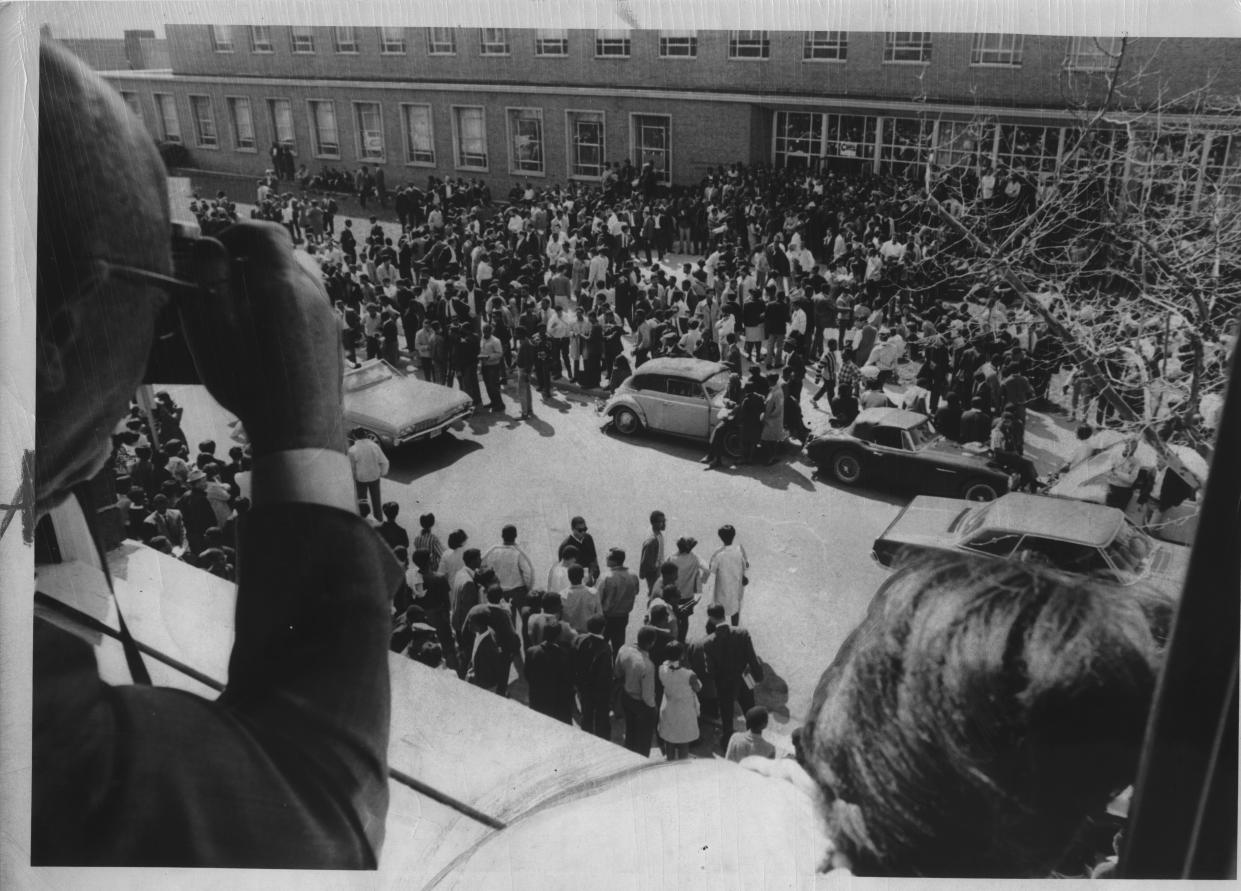
Students today feel the weight of the threats as much as they did years ago.
“It makes me realize how there are still these terrorists that are trying to stop minorities from advancing or just getting a simple education from a predominantly Black institution,” Saigan Boyd, a student at Spelman College, told CNN this month. “I’m just tired of being terrorized like how my grandparents were.”
While there is limited nationwide data available on bomb threats, in 2018 the Bureau of Alcohol, Tobacco, Firearms and Explosives reported that 529 bomb threats were made to schools, a 33 percent increase from two years prior.
HBCUs represent an increasingly large cross section of the world, and the demographics at such institutions continue to evolve. According to data compiled by the National Center for Education Statistics, non-Black students in 2020 made up some 24 percent of HBCUs’ student populations, compared with just 15 percent in 1976.
According to Walters of Tougaloo College, the HBCU community remains committed to their cause. “Though many of our institutions were born out of the soil of former slave plantations, we continue to be true to our history and those we serve,” she said.
_____
Cover thumbnail photo illustration: Jim Watson/AFP via Getty Images, Andre Chung for the Washington Post via Getty Images
